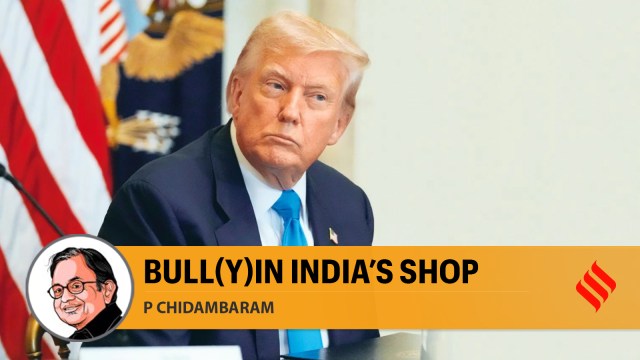
India had a Luddite attitude toward foreign trade, especially imports. Despite NAM, South-South, etc., we were wary of foreign countries in the matter of trade and foreign investment. We pulled down the shutters and refused to open them for four decades. We wrote the dreaded manuals for import and export: everything required licenses and permits. Most imports, and some exports, were ‘canalised’ through state-owned corporations. We had an officer called Chief Controller of Imports and Exports who had an army of officers spread throughout the country whose only business was to issue licenses for imports and exports. It was a profitable business. No one paused to ask the obvious question, ‘Alright, we understand why we have a controller of imports, but why do we have a controller of exports?’
The policy did not boost exports or build an export-oriented manufacturing sector or augment the foreign exchange reserves. Meanwhile, several countries, whose economies were at the same level as India’s, opted for an open economy and allowed free trade, and became rich.
A combination of factors brought the Indian economy to the edge of a financial crisis in 1990-91. India was forced to embrace economic reforms. Trade policy reforms, industrial policy reforms, and a focus on fiscal discipline pulled India back from the brink, and put the economy on a growth path. We lowered tariffs (the average was brought down to 12 per cent by 2013) and diluted non-tariff barriers. We signed GATT and became a member of the World Trade Organization. We signed Free Trade Agreements. We can confidently say that Indians have accepted that the economy must be an open economy.
Shockingly, however, when developing countries have converted to an open economy, the original open economies have turned ‘protectionist’. None more than the United States under President Donald Trump.
Taking measures to stave off a temporary crisis is one thing, elevating protectionism to the status of official economic policy is another. Mr Trump is unapologetically in favour of high tariffs, opaque non-tariff measures, discouraging imports, balanced trade with every country, and threatening American companies not to locate their factories outside America. He believes that ‘tariffs’ will accomplish what he desires. He has brought into policy-making weird factors such as bias for Republican-leaning states, prejudice against Canada’s leaders, false arguments like the American economy no longer creates new jobs for Americans, and bizarre claims that the burden of high tariffs will be borne by the exporters and not the American consumer. Mr Trump has dismissed proven economic truths such as factor disparities, specialisation, division of labour, supply chains, etc.
Mr Trump has maniacally insisted that American companies must bring manufacturing back to America. He calls it re-shoring. The Harvard Business Review had an article titled ‘Bringing Manufacturing Back to U.S. is Easier Said Than Done’. It said, “the days are long gone when a single vertically-integrated manufacturer could design and manufacture all or most of the sub-assemblies and components it needs to make a finished product. Technology is just too complicated, and it is impossible to possess all the skills that are necessary in just one place.” Mr Jeffry Sachs described Mr Trump as an “unsophisticated” person who does not and cannot understand the complexities of manufacturing in the 21st century.
Mr Trump has weaponised tariffs to ‘reward’ countries that have keeled over (Australia, Indonesia, Japan, South Korea) and ‘punish’ countries that stood firm (Canada, France, United Kingdom, Brazil). India was in the ‘undecided’ column until Mr Trump imposed a steep tariff on steel, aluminium and copper, and a base tariff of 50 per cent on Indian goods (with some exemptions and a lagged effect) that included a penalty for buying Russian oil. India responded with ‘we will take necessary measures’.
India cannot, obviously, bend over. Nor does India need to be defiant. We must clearly declare our willingness to negotiate however long and painful the process may be. The laws of economics will force Mr Trump to reconsider his weaponisation of tariffs: high tariffs will increase prices of hundreds of goods that Americans consume, inflation will rise, American companies will drag their feet on re-shoring, jobs will not increase, and the US growth rate will inevitably slow down. The mid-term elections in 2026 may check the hubris of Mr Trump.
Meanwhile, India cannot be a lazy exporter content with limited export products and few export markets. We must scrap the creeping controls on exporters. We must enlarge our basket of products. We must actively look for new markets that can absorb up to USD 45 billion of products (the value of goods we exported to the US in 2024-25). We must liberalise the rules for foreign direct investments. In the short term, we must offer incentives for exporters. We may consider adjusting the exchange rate to compensate the exporters although it will increase the cost of imports. All unnecessary imports could be temporarily curbed.
The first lesson in foreign relations is, if one bends, kneels and crawls, one is bound to be kicked to the ground. Mr Modi forgot this lesson in his dosti with Mr Trump. Thankfully, there are signs of resistance. India must let America know that it will stand firm, defend its interests, be open to fair trade, and ready to negotiate and conclude agreements, however difficult the process may be.